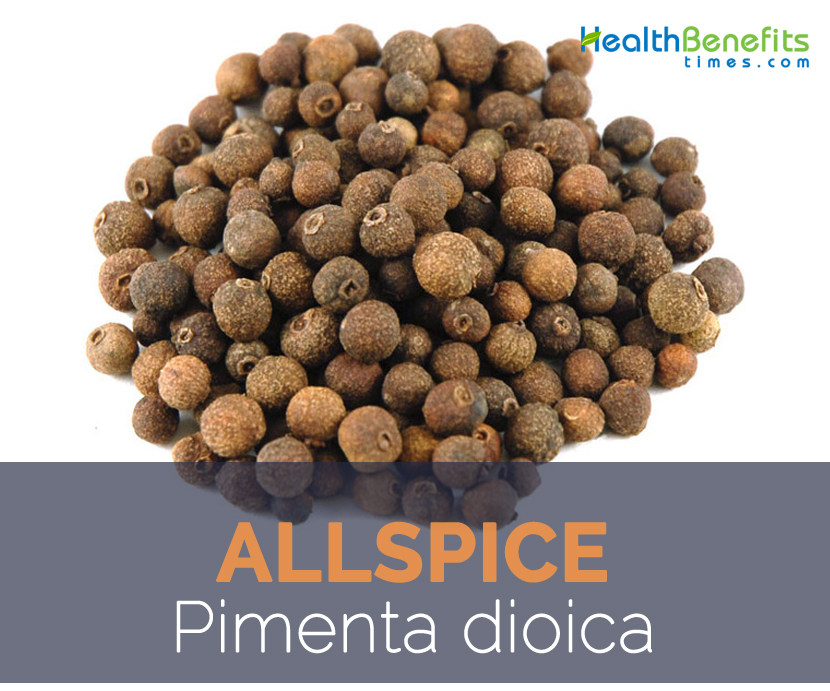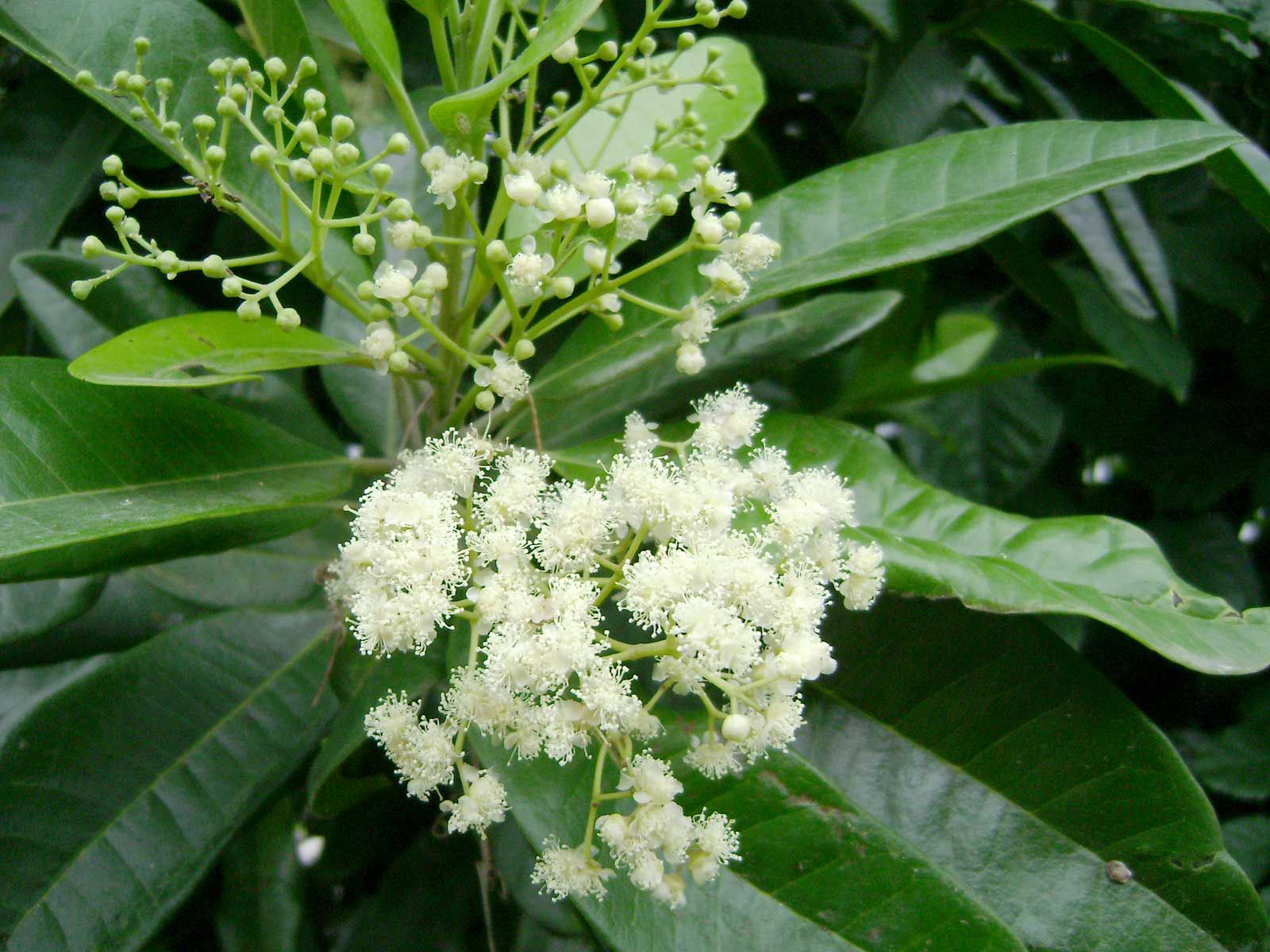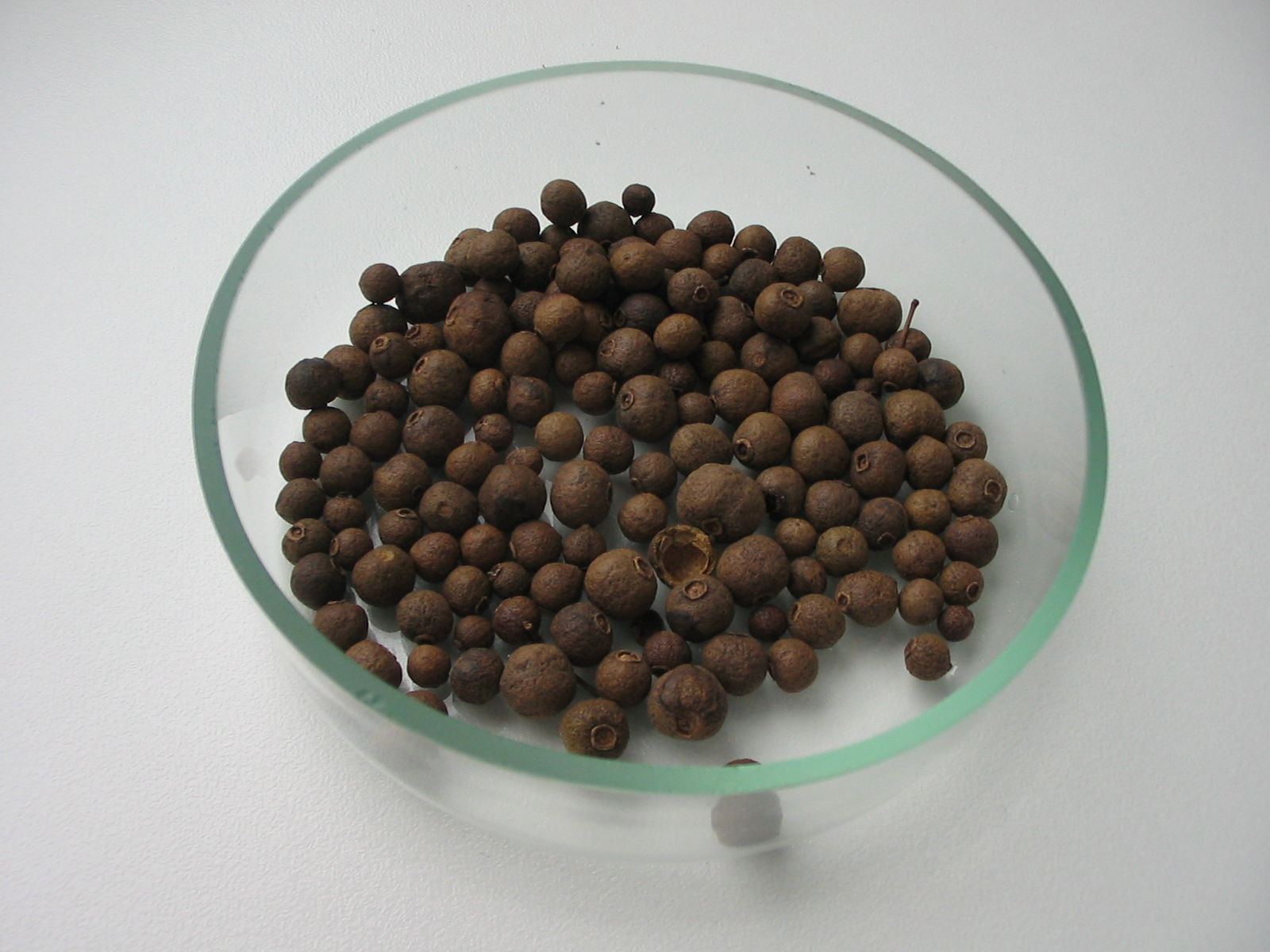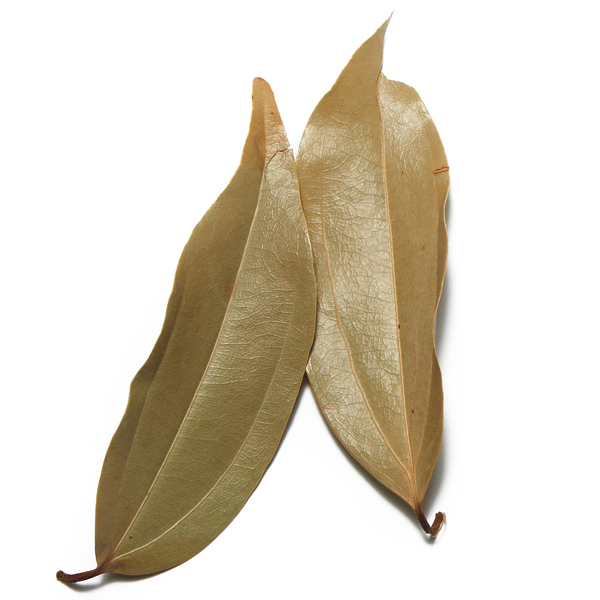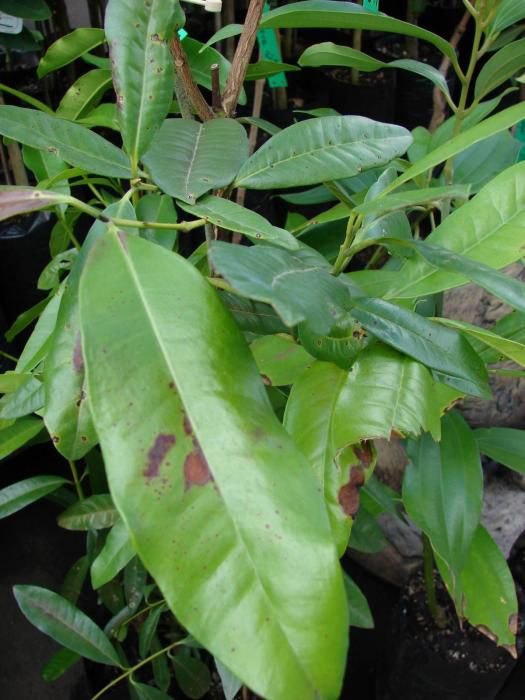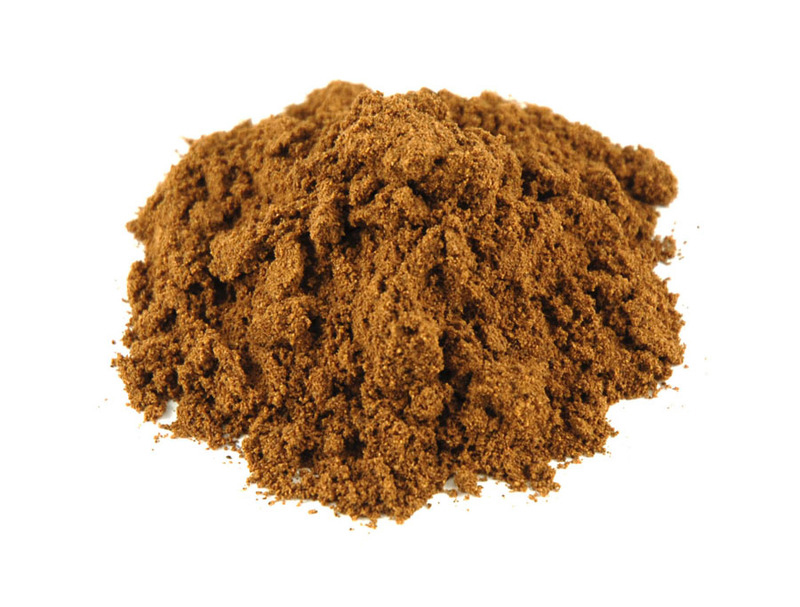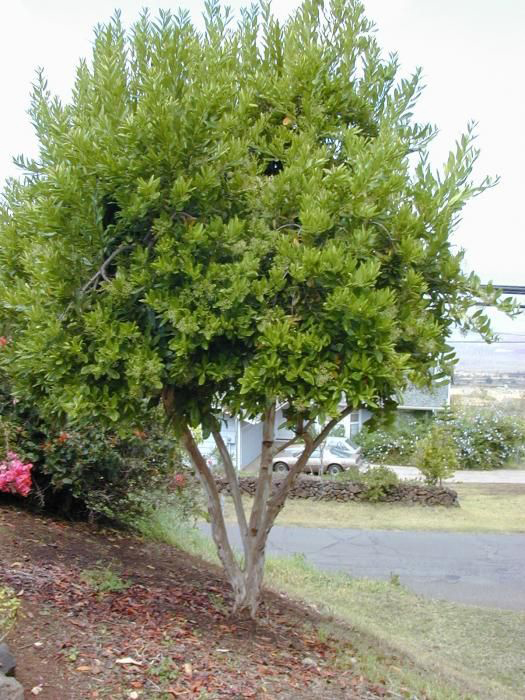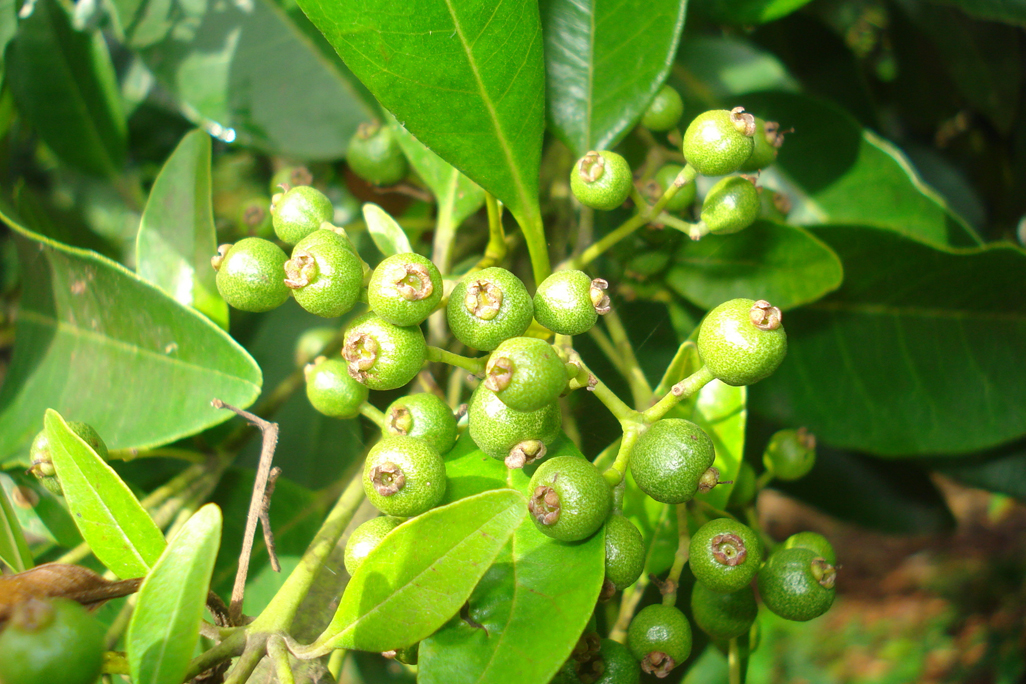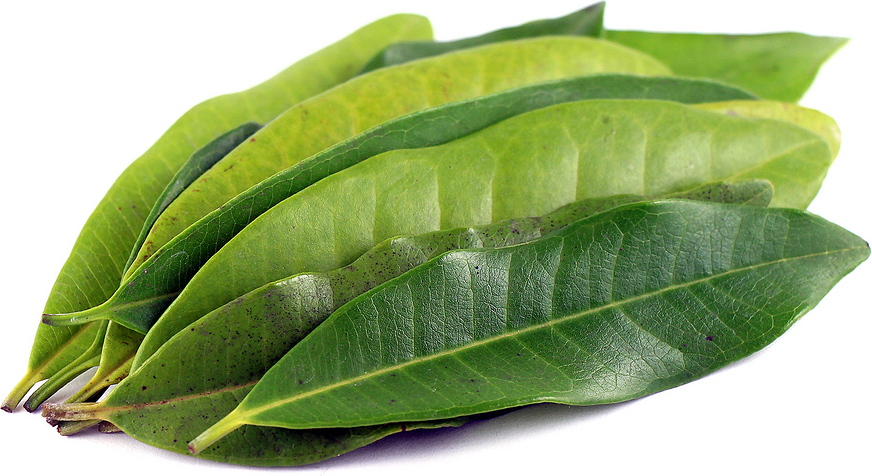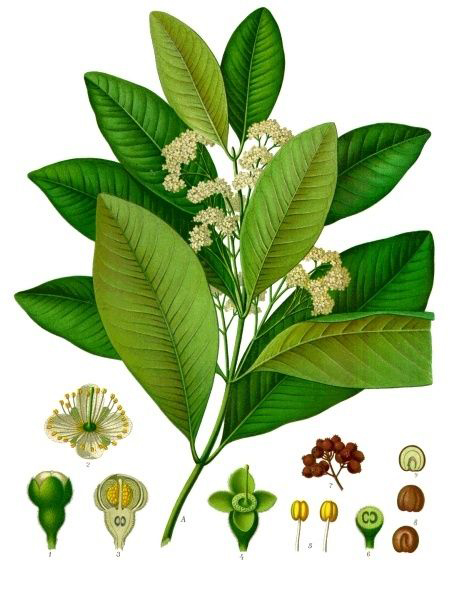Plant
Allspice is a small, evergreen, branched, tree, 6–12 m high with brownish-gay, erects trunk and a bushy, rounded canopy. It grows well in semitropical lowland forests and thrives best in well drained, moist, fertile, loamy calcareous soil. Leaves are opposite, simple, oval-oblong to elliptical, clove smelling 6–16 cm long by 3–6 cm wide, obtuse rounded apex, cuneate base, glabrous, entire, leathery, pellucid-dotted on lower surface with 12–16 pairs of prominent main veins, mid-rib depressed on upper surface, glossy deep green when mature, pale green when juvenile. Normally flowers are bisexual, greenish white, small, 6–10 mm across that appear in summer, and are followed by round, berries.
Fruit
Allspice, also commonly known as Jamaican pepper or pimento, is one of the extensively used spices in the Mexican as well as other Central American cuisines. Allspice is a small, globose, berries 6 -10 mm diameter, with a thick, woody, brittle pericarp and are green while young turning to dark purple when ripe. There is a thin layer of soft, sweet aromatic pulp around the seeds that is very delicious and reminiscent of cloves. The skin is much wrinkled. They are picked when green and unripe and are traditionally dried in the sun. When, ending up as the somewhat shrunken, hard berries. Allspice berry has strong, spicy and pungent smell that closely resembles a mixture of black-pepper, nutmeg, cloves, and cinnamon and pungent and slightly peppery taste. Each berry has two hard, dark-brown, reniform seeds. Seeds are about the size of a peppercorn. Whole fruits have a longer shelf life than the powdered product and produce a more aromatic product when recently ground before use.
History
Allspice is considered to have originated from West Indies – Greater Antilles, and possibly parts of Central America – from southern Mexico to Guatemala, Belize, El Salvador, Honduras and Nicaragua. In the 1600’s it was introduced to Europe and became a popular substitute for the more expensive cardamom. In England it was used to preserve fish and to flavor beef. It is currently extensively grown in Jamaica, Guatemala and Mexico (Yucatán), also in northern South America, India and Réunion.
Nutritional Value
Apart from their strong spicy and pungent smell and slightly peppery taste, allspice is a good source of nutrients, vitamins and minerals. Consuming 100 gram of allspice offers 2.943 mg of Manganese, 7.06 mg of Iron, 661 mg of Calcium, 0.553 mg of Copper, 21.6 g of Total dietary Fiber, 72.12 g of Carbohydrate, 39.2 mg of Vitamin C, 135 mg of Magnesium, 8.69 g of Total Fat and 1044 mg of Potassium.
Health benefits of Allspice
Even though we believe of it like a cooking component, allspice is additionally considered to have got therapeutic qualities. Allspice is about 4% oil. A substance within the oil, known as eugenol, has germ killing as well as pain reducing features. Research claims that allspice might also combat particular bacteria, viruses as well as fungi and also enhance digestion of food. Listed below are some of the popular health benefits of using allspice:
- Strong bones
Allspice consists of considerable amount of manganese which is extremely essential for healthy growth of human bones. Osteoporosis and arthritis are few of the possible problems related with manganese deficiency. Manganese that we consume is stored in bones, liver and kidney and any insufficiency of manganese may directly affect these organs as well as their actions. Allspice is an essential ingredient that adds to bone density and bone repair. Some research recommended manganese supplementation to improve BMD (Bone Mineral Density).(1)
2. Anti-Inflammatory Qualities
One of the most important features of allspice is its capability to lower inflammation and relieve pain in parts of the body. The active ingredients within the spice have chemical compounds which eliminate inflammation, making it perfect spice to give you some relief from arthritis, gout, muscle aches, or even hemorrhoids. Apart from that allspice has certain analgesic components which allow for pain reduction in the case of injury or surgical recovery.(2)
3. Makes You Energetic
Iron contained in allspice acts as a carrier of oxygen in the body and transfers it to the muscles and the brain, thus increasing both physical performance and mental alertness. Low levels of iron in the body make you distracted, short-tempered, and fatigued. Research conducted by the University of Melbourne recommends iron supplementation for improving exercise performance in women. So include iron rich food in your normal diet to gain sufficient amount of iron.(3)
4. Digestion
Allspice has calming, rubefacient effects which make it perfect for comforting the stomach and also facilitating healthy digestion. Eugenol found in allspice help to eliminate digestive problems like constipation, diarrhea, nausea and vomiting, while also encouraging regularity, which can help to reduce bloating and excess flatulence. The anti-inflammatory feature of allspice also eases cramps, which can ease the entire process of digestion.(4)
5. Cancer Prevention
Researches have shown that consuming calcium rich foods are linked with a reduced risk of colon and rectal cancers. There’s in fact a link between calcium supplements as well as heart attacks, therefore it’s best to get the mineral from calcium rich food sources. Allspice consists of 661 mg of iron which is 66.10% of the daily recommended value so include calcium rich food to remain safe from cancer.
6. Immune System
Allspice consists of certain antibacterial and antifungal effects, mainly in terms of stomach bacteria. In addition to assisting the gastrointestinal system function efficiently, it also protects from outside attack through a natural immune response. Additionally, when allspice is included to certain foods, it neutralizes the bacteria at that level, before it enters the body and start damaging them.(5)
7. Slows Aging
Allspice consists of copper which is a potent antioxidant that defends cells from free radical damage. It helps to reduce the appearance of wrinkles, age spots, and even macular-degeneration. Including allspice is considered beneficial to slow aging process since it contains 0.553 mg of copper which is 61.44% of the daily recommended value.
8. Dental Health
The antimicrobial, antibacterial, and antiseptic features of allspice help to enhance dental health though gargling with this spice wouldn’t be mostly pleasing, it has been related to healthier dental and gum health by protecting against bacterial pathogens.(6)
9. Reduced constipation (Bulking)
Fiber rich foods help to reduce constipation by adding bulk to the stool. Bulky feces can move through the gut faster, resulting in an increased stool weight and enhanced regularity. The increase in fecal bulk also “dilutes” the effect of toxic substances within the colon. Stool consistency, stool weight and frequency of excretion are signs of colonic function. Increased bulking and decreased transit time are considered as the most widely known beneficial effects of dietary fibers in general. Fiber rich food is better to reduce constipation.
10. Circulation
Allspice contains significant amount of copper and iron that is ideal for enhancing circulation, since these are important components of red blood cells. Additionally, the rubefacient aspect of the spice is a stimulant, and warms the body. Combined with increased blood flow, it may result in extra energy and the proper oxygenation of extremities within the body. Iron also functions in the formation of certain enzymes which are crucial for general metabolism.(7)
11. Heart Health
Potassium found in allspice has an optimistic effect on heart health, since it is a vasodilator and releases much of the tension on the cardiovascular system. This causes an increase in blood flow through the relaxed blood vessels and decreases the strain on the arteries and heart, thus reducing the chances of developing atherosclerosis, and consequently, strokes and heart attacks.(8)
12. Good for Diabetics
Allspice has a very low Glycemic index, which makes it beneficial and safe for those who are suffering from Type II diabetes. It rationalizes the blood sugar level if frequently consumed in the form of tea before the meals.
People who suffer from Type II diabetes, the function of sugar absorption and conversion to energy is partially reduced. It is because consuming food with low Glycemic index tends to control blood glucose levels post meal. Nearly 1 tbsp or 6 grams of grounded Allspice has a Glycemic index of just 1 on a scale of 250 where a typical target for a day is 100.(9)
How to Eat
- Allspice is used as a spice in cooking meats, vegetables, and in desserts.
- Whole dried fruit is ground to produce the allspice powder of commerce.
- Allspice liqueur called “pimento dram” is produced in West Indies.
- It is used in jerk seasoning, mole sauces (homogenous, thick sauces for poultry) and to flavor pickles; it is a vital ingredient in commercial sausages as well as curry powders.
- Allspice is used in large quantities by the commercial sausage industry in Germany.
- It is widely used in all sorts of desserts – cakes, confectionary, cookies etc. in America and Great Britain.
- Allspice powder is extensively used in soups, stew, spaghetti sauce, pot roast, meat loaf, barbecue sauce, catsup, as a coating for ham, salad dressing marinade, cakes, cookies, pickles and pickled beets, fruit pie, fish, sweet potatoes, squash, candy, frosting, and mincemeat.
- Fresh leaves are used similarly to the way bay leaves are utilized.
Other Facts
- Apart from food industry, essential oils of P. dioica leaf and fruit are used in perfumery (especially in aftershaves and deodorants), cosmetics and medicine.
- Pimento was used as an ointment or a bath additive and occasionally included to commercial medicines to increase their flavor.
- Indians used it to embalm their dead and departed during the pre-Columbian Mayan civilization.
- Bark and leaves contain tannin and are used for tanning purposes.
- Wood which is very firm and hard with close texture, smooth surface and dark to light salmon color is used for making walking sticks and umbrellas.
- Allspice has insecticidal and nematicidal activity and is probable to be used as a termiticide and nematicide.
- Studies showed that P. dioica essential oil can be used as an effective alternative acaricide for the control of the cattle tick, Microplus.
Ayurvedic Benefits of Allspice
- Eugenol contained in allspice possesses local anesthetic as well as germ killing qualities which are very helpful in gum as well as dental care methods. However, it really is advantageous whenever drawn in a small amount only.
- It is known to improve digestion power, simply by growing gastro-intestinal secretions.
- Allspice berry are therapeutically beneficial in dealing with flatulence as well as indigestion in traditional medicinal practices.
- It is extremely beneficial in colds, diabetes, diarrhea, fatigue, hysterical paroxysms, as well as menstrual cramps.
- Crushed Allspice berries are used topically to deal with bruises and calm sore muscles and joints.
- The usage of allspice along with meals can result in powerful digestive function, can help to eliminate gas, bloating, and may convenience nausea.
- It can easily avoid unhealthy swings within your blood glucose levels.
- It is extremely beneficial if you’re attempting to control your appetite in order to shed weight.
- A hot beverage or even tea made from Allspice could be drunk to relieve pain due to menstrual cramps, mild headaches, muscle and joint soreness, arthritis, as well as toothaches.
- Drinking allspice help you to unwind the body and mind, and could be an excellent drink to take before going to bed or even when you want to just unwind.
- You can add a few Allspice oil to your hot bath to ease general body pains and aches.
- The decoction extracted from this spice sometimes used to treat flatulence as well as indigestion in traditional medicinal practices.
- Pru is a traditional refreshment and therapeutic drink made by the decoction of three species Gouania polygamy (Jacq.) Urban, Smilax domingensis Willd., and Pimento dioica and fermentation with sugar and are claimed to have hypotensive, stomachic, depurative, and diuretic features.
- Pimento oil is useful for the digestive system, for cramp, flatulence, rheumatism, dyspepsia, nausea, indigestion, colic and diarrhea.
- Essential oils help in depression, stress, nervous exhaustion, neuralgia and tension and is used as natural repellent.
Buying and storing allspice
- It is best to buy allspice in the whole berry form, since when the berries are powdered they actually have a tendency to drop their flavor as well as fragrance quite fast.
- You can easily grind the berries, simply put them in a pepper mill or even coffee grinder or using a pestle and mortar.
- The whole berries could keep forever if kept in an air-tight glass jar out from the sunshine. The ground powder will simply keep for a couple months.
Storage Tips
- Allspice can be purchased in the form of whole berries or even powder, according to individual’s choice. However, the whole berries could be kept for a longer period and produce a lot more flavor whenever newly grounded just before using.
- Allspice whole or even powdered needs to be kept in cool, dark as well as dry location. Whilst its powder can remain fresh for nearly 6 months and in its whole form, it may last as long as 1 year.
- Allspice provides an exclusive taste to each food to which it really is included – just like tomato sauce, pork marinades, stews, barbecue and also desserts. Use it moderately and revel in its Amazing benefits.
How to Cook Allspice
To gather aroma and taste, chop your allspice right before you start to cook your meal and include it in the final stages of the recipe. When you cook it too much, the essential oils will surely evaporate. Allspice is a crucial component in Caribbean food. It is utilized in Caribbean jerk seasoning (normally the wood is used for smoking however the spice will make a practical replacement), in mole sauces, as well as in pickling. You may have allspice in curry powders, sausages as well as barbecue sauces. Allspice can be used an alternative, measure for cinnamon, cloves or nutmeg. Alternatively, to create an alternative for allspice, mix one part nutmeg along with two parts each of cinnamon as well as cloves.
Culinary uses of allspice
Allspice is famous for being the primary component of the Caribbean “jerk” seasoning, a marinade combination, which is often used to flavor meats as well as poultry, particularly pork as well as chicken. The meat is marinated within the spicy seasoning and after that cooked over a wide open fire, just where allspice branches can be used for the firewood. Different methods of using allspice in many kinds of cuisines are:
- In Caribbean soups, stews as well as curries.
- In pickling blends.
- In chutneys, jams, pickles, preserves as well as marinades.
- In mulled wine along with other kind of hot punch or beverage.
- In cakes and biscuits.
- In milk puddings as well as desserts.
- In fruit pies, crumbles, compotes and sauces.
- In bean soups or pulse dishes.
- In sausage mixture and also meat pies or pasties.
- In meat rubs and marinades.
- In pâtés and terrines.
- In ice creams and alcoholic liqueurs.
- In flavoring chocolate or hot chocolate.
Allspice Uses
Allspice goes well in several tasty dishes made out of meats just like beef, lamb and wild game. Dating back to Mayan times, it was utilized to cure as well as protect meats. Today, those same qualities turn it into a common and also suggested, accessory for jerky-like chicken, pork and beef. Unsurprisingly, smoked as well as canned meats also regularly include allspice, just like Indian curry recipes.
In terms of vegetables, allspice works the best for cabbage, Brussels sprouts along with other members of the cabbage family; along with beets, squash as well as other root vegetables; along with nightshades just like tomatoes, spinach, peppers, mushrooms and eggplant. It provides consistency to the flavor of soups and stews; also it perks up grains, from rice to couscous, millet to barley. You’ll also find it in fairly sweet dishes just like pumpkin pie, fruit pies, puddings, cakes as well as ice cream. In the indigenous South America, people utilized allspice to taste their chocolate.
In short, something that may possibly taste good along with cinnamon, cloves as well as nutmeg, possibly tastes excellent together with allspice too. The one difference in flavor in between allspice along with a combination of these other spices is always that allspice could be a moderate bit more peppery.
Allspice is frequently included with sauces and marinades, and is also a typical component in several mulling as well as pickling spice blends.
Precautions
- Excessive usage of allspice can result in seizures. Additionally, it can cause nausea, appetite loss, vomiting, as well as stomach discomfort.
- It is recommended never to mix herbs with drugs, as it could lead to unwanted side effects. Strictly prevent taking herbs along with mineral supplements, especially iron.
- The herb shouldn’t be utilized for long-term digestive disease, like duodenal ulcers, reflux disease, ulcerative colitis, irritable bowel, and diverticulosis.
- People with history of cancer or those people who are a risk of cancer shouldn’t use this herb as Eugenol, an ingredient present in it, may encourage cancer.
- Excessive usage of herb may also result in skin rashes along with other skin difficulties. Hence, individuals with skin allergies shouldn’t take allspices within their food.
- Allspice should not be consumed while pregnant as well as breastfeeding.
References:
http://www.foodreference.com/html/fallspice.html
http://herbsspices.about.com/od/herbsspiceshealth/fl/Clove-A-Winter-Spice.htm
http://www.kidzsearch.com/wiki/Allspice
http://www.gourmetgarden.com/en/herb/527/allspice
https://en.wikipedia.org/wiki/Allspice
http://www.homeremedieskit.com/health-benefits-of-allspice-nutrition-facts/
http://herbsarespecial.com.au/articles/ALLSPICE.pdf
https://www.herbsociety.org/herbs/documents/DidYouKnowAllspice.pdf
Comments
| Allspice Quick Facts | |
|---|---|
| Name: | Allspice |
| Scientific Name: | Pimenta dioica |
| Origin | Native of West Indies |
| Colors | Green turning dark purple when ripe |
| Shapes | Globose 4–7 mm in diameter with a thick, woody, brittle pericarp |
| Taste | Pungent and slightly peppery |
| Calories | 263 Kcal./cup |
| Major nutrients | Manganese (127.96%) Iron (88.25%) Calcium (66.10%) Copper (61.44%) Total dietary Fiber (56.84%) |
| Health benefits | Good for Diabetics, Heart Health, Circulation, Reduced constipation (Bulking), Dental Health, Slows Aging, Immune System, Cancer Prevention, Digestion, Makes You Energetic, Anti-Inflammatory Qualities, Strong bones |
| More facts about Allspice | |
| Rank | Scientific Name & (Common Name) |
|---|---|
| Kingdom | Plantae (Plants) |
| Subkingdom | Tracheobionta (Vascular plants) |
| Superdivision | Spermatophyta (Seed plants) |
| Division | Magnoliophyta (Flowering plants) |
| Class | Magnoliopsida (Dicotyledons) |
| Subclass | Rosidae |
| Order | Myrtales |
| Family | Myrtaceae (Myrtle family) |
| Genus | Pimenta Lindl. (Pimenta) |
| Species | Pimenta dioica (L.) Merr. (Allspice) |
| Synonyms |
|


